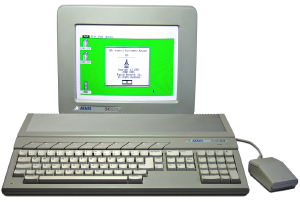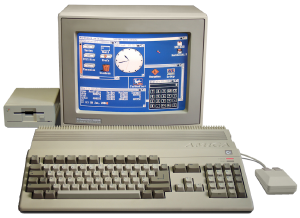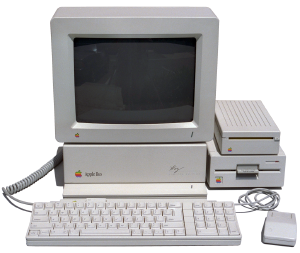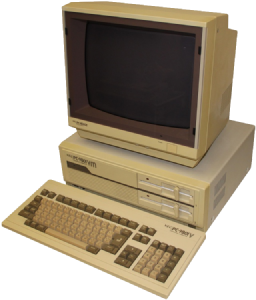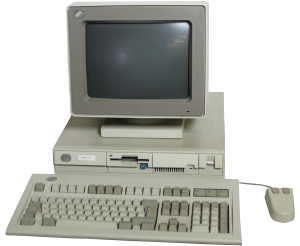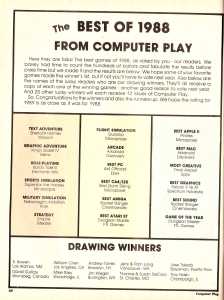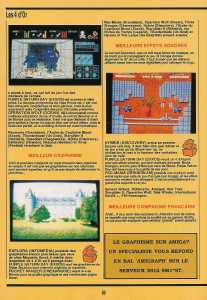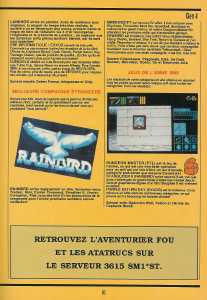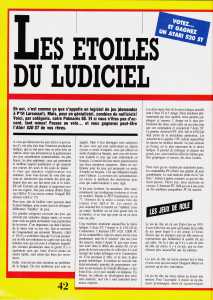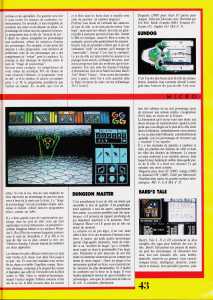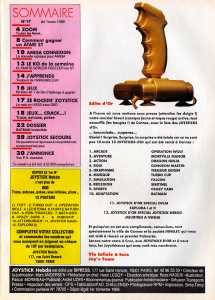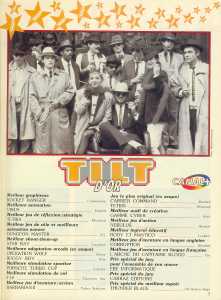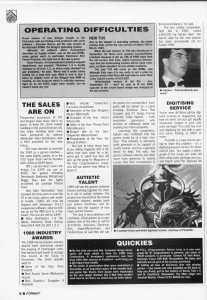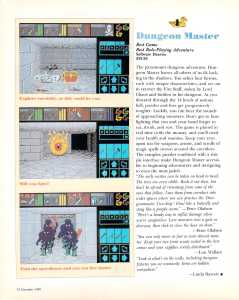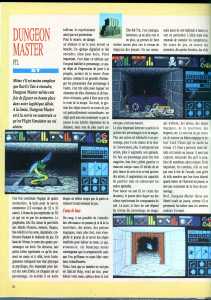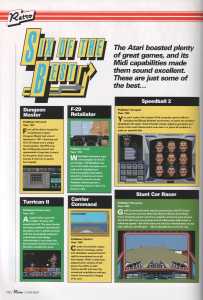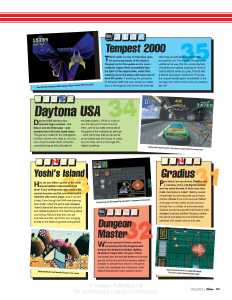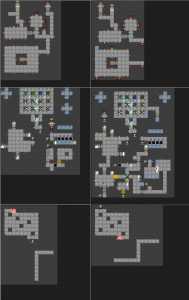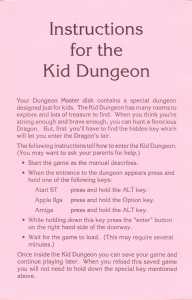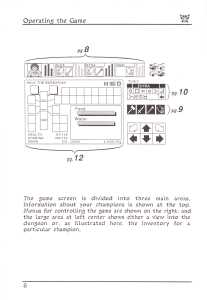Dungeon Master
Description
Dungeon Master was the best selling product of all time on the Atari ST (and possibly on the Commodore Amiga as well) and won virtually every major award when it was first released in 1987, including the first ever Special Award for Artistic Achievement from Computer Gaming World. It established a new standard for Fantasy Role-Playing games. Dungeon Master was eventually released on eight different platforms in four languages.
Dungeon Master was developed on Atari ST from February 1986 until the initial release on December 15, 1987. It was then ported to many other platforms, starting with the Apple IIGS and then the Amiga (see Don Jordan page at mobygames.com). Other ports were also made for PC, Super Nintendo Entertainment System, X68000, PC-9801 and FM-Towns.
Dungeon Master for Atari ST was developed in Megamax C with much of the graphic code in assembly as mentioned in this Interview of Wayne Holder (February 1988). The graphics were hand drawn using the N-VISION software on Atari ST.
The original game was in English. It was translated to German, French and Japanese. Chinese and Korean editions were released only on PC (the game itself was not translated, only the box and manual).
In Europe, the game was first distributed by Mirrorsoft until its demise in early 1992, and later re-released by Psygnosis around June 1992 after signing a deal in April 1992.
In the United Kingdom, Gainstar shortly distributed the Amiga edition directly imported from the USA, bypassing the exclusivity of Mirrosoft before they found an agreement.
Japanese title: ダンジョン・マスター (Dungeon Master)
Doug Bell made some comments about the influence of the ‘Dungeons and Dragons’ pen-and-paper role-playing game on the design of the game:
Here’s a bit of trivia from someone who was there. Dungeon Master doesn’t have anything to do with Tolkien, at least not directly. There are some loose associations with D&D that came from Andy Jaros, the graphic artist. Andy was the only one on the development team that ever played D&D and at least the concept for the Wizard’s Eye (the floating eye creature) and the Shrieker were borrowed from D&D. The character classes (fighter, wizard, priest, ninja) were also modeled on D&D. There were probably some other subtle influences, but really not as much as is probably perceived. What we did take directly from D&D was the name Dungeon Master after realizing that TSR never copyrighted or trademarked the term. It was an admittedly blatant attempt to gain some name recognition, although for a while at least, the term Dungeon Master was better known because of the computer game than because of D&D. (As a side note, FTL had brief discussions with TSR about having TSR market the game. During these discussions we showed a prerelease version of Dungeon Master to TSR, so TSR had their opportunity to object to the name and didn’t.)
The Dungeon Master reference information you will find on this site comes from the PC version of Dungeon Master.
Here are two great articles about the history of the game:
The Making of Dungeon Master at ‘The Digital Antiquarian’
Dungeon Master test and history (French)
Platforms
Trade shows
Dungeon Master was shown at the following trade shows:
- Summer CES (Consumer Electronics Show) 1986 in Chicago between June 1 and June 4, 1986
- See Dungeon Master for Atari ST (Teaser demo)
- Winter CES (Consumer Electronics Show) 1987 in Las Vegas between January 8 and January 11, 1987
 Dungeon Master And RPV (Atari ST) NewsTilt (France), Issue No 40 March 1987, Page 14[Credits: Abandonware Magazines]
Dungeon Master And RPV (Atari ST) NewsTilt (France), Issue No 40 March 1987, Page 14[Credits: Abandonware Magazines]- PCW (Personal Computer World) Show 1988 in London between September 16 and September 18, 1988
 Dungeon Master NewsComputer Gamesweek (United Kingdom), Issue No 4 14 September 1988, Page 10[Credits: Internet Archive]
Dungeon Master NewsComputer Gamesweek (United Kingdom), Issue No 4 14 September 1988, Page 10[Credits: Internet Archive]- Spring ECTS (European Computer Trade Show) 1992 in London between April 12 and April 14, 1992
 Dungeon Master NewsGénération 4 (France), Issue No 44 May 1992, Page 98[Credits: Abandonware Magazines]
Dungeon Master NewsGénération 4 (France), Issue No 44 May 1992, Page 98[Credits: Abandonware Magazines] Dungeon Master NewsMicromanía (Spain), Segunda época Issue No 49 June 1992, Page 28[Credits: Internet Archive]
Dungeon Master NewsMicromanía (Spain), Segunda época Issue No 49 June 1992, Page 28[Credits: Internet Archive] Dungeon Master NewsZero (United Kingdom), Issue No 32 June 1992, Page 8
Dungeon Master NewsZero (United Kingdom), Issue No 32 June 1992, Page 8- Spring ECTS (European Computer Trade Show) 1993 in London between April 4 and April 6, 1993
 Dungeon Master (Super NES) NewsSuper Pro (United Kingdom), Issue No 7 June 1993, Page 30[Credits: Retromags]
Dungeon Master (Super NES) NewsSuper Pro (United Kingdom), Issue No 7 June 1993, Page 30[Credits: Retromags]- Summer CES (Consumer Electronics Show) 1993 in Chicago between June 3 and June 6, 1993
Awards
The trifold brochure on Dungeon Master Flyers shows a list of awards and a photo of some of them on a wall (see at the bottom left):
The awards on the photo are (from top left to right, then bottom left to right):
- Info (USA) Best Amiga Game 1989
- Computer Gaming World (USA) Special Award for Artistic Achievement
- Unknown
- Unknown
- Not an award for Dungeon Master! This is the Family Computing (USA) Critic’s Choice Award 1984 for Sundog: Frozen Legacy
- The Golden Chalice Awards by The Adventurers Club Ltd. (United Kingdom) “Golden Sword” Best Role Playing Game 1988
- Unknown
- Power Play (Germany) Best Role Playing Game 1988
Magazine articles
- Advanced Computer Entertainment (United Kingdom)
- Amiga Action (United Kingdom)
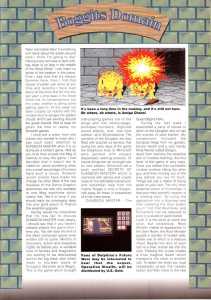 Dungeon Master ArticleAmiga Action (United Kingdom), Issue No 12 September 1990, Page 13[Credits: Internet Archive]
Dungeon Master ArticleAmiga Action (United Kingdom), Issue No 12 September 1990, Page 13[Credits: Internet Archive]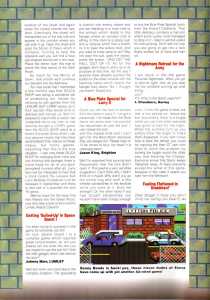 Dungeon Master ArticleAmiga Action (United Kingdom), Issue No 12 September 1990, Page 14[Credits: Internet Archive]
Dungeon Master ArticleAmiga Action (United Kingdom), Issue No 12 September 1990, Page 14[Credits: Internet Archive]- Amiga Format (United Kingdom)
 Dungeon Master And Chaos Strikes Back (Amiga) ArticleAmiga Format (United Kingdom), Complete Software Guide 1992, Page 18[Credits: RetroPDFs]
Dungeon Master And Chaos Strikes Back (Amiga) ArticleAmiga Format (United Kingdom), Complete Software Guide 1992, Page 18[Credits: RetroPDFs]- Amiga Power (United Kingdom)
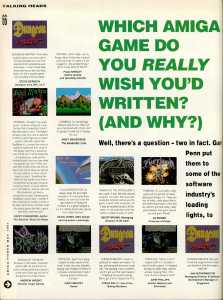 Dungeon Master ArticleAmiga Power (United Kingdom), Issue No 1 May 1991, Page 66[Credits: Internet Archive]
Dungeon Master ArticleAmiga Power (United Kingdom), Issue No 1 May 1991, Page 66[Credits: Internet Archive] Dungeon Master ArticleAmiga Power (United Kingdom), Issue No 1 May 1991, Page 67[Credits: Internet Archive]
Dungeon Master ArticleAmiga Power (United Kingdom), Issue No 1 May 1991, Page 67[Credits: Internet Archive]- Analog Computing (USA)
 Dungeon Master And RPV (Atari ST) NewsAnalog Computing (USA), Issue No 49 November 1986, Page 59[Credits: Internet Archive]
Dungeon Master And RPV (Atari ST) NewsAnalog Computing (USA), Issue No 49 November 1986, Page 59[Credits: Internet Archive]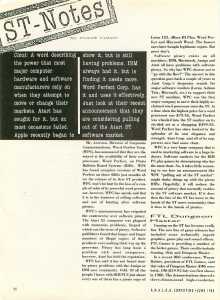 Dungeon Master (Atari ST) ArticleAnalog Computing (USA), Issue No 61 June 1988, Page 96[Credits: Atarimania]
Dungeon Master (Atari ST) ArticleAnalog Computing (USA), Issue No 61 June 1988, Page 96[Credits: Atarimania] Dungeon Master (Atari ST) ArticleAnalog Computing (USA), Issue No 61 June 1988, Page 97[Credits: Atarimania]
Dungeon Master (Atari ST) ArticleAnalog Computing (USA), Issue No 61 June 1988, Page 97[Credits: Atarimania]- Computer Gaming World (USA)
 Dungeon Master AwardComputer Gaming World (USA), Issue No 53 November 1988, Page 21[Credits: Computer Gaming World Museum]
Dungeon Master AwardComputer Gaming World (USA), Issue No 53 November 1988, Page 21[Credits: Computer Gaming World Museum] Dungeon Master AwardComputer Gaming World (USA), Issue No 53 November 1988, Page 35[Credits: Computer Gaming World Museum]
Dungeon Master AwardComputer Gaming World (USA), Issue No 53 November 1988, Page 35[Credits: Computer Gaming World Museum]- CU Amiga (United Kingdom)
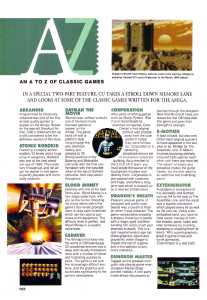 Dungeon Master ArticleCU Amiga (United Kingdom), March 1991, Page 102[Credits: Amiga Magazine Rack]
Dungeon Master ArticleCU Amiga (United Kingdom), March 1991, Page 102[Credits: Amiga Magazine Rack] Dungeon Master NewsCU Amiga (United Kingdom), June 1992, Page 167[Credits: RetroPDFs]
Dungeon Master NewsCU Amiga (United Kingdom), June 1992, Page 167[Credits: RetroPDFs] Dungeon Master And Chaos Strikes Back NewsCU Amiga (United Kingdom), July 1992, Page 79[Credits: RetroPDFs]
Dungeon Master And Chaos Strikes Back NewsCU Amiga (United Kingdom), July 1992, Page 79[Credits: RetroPDFs]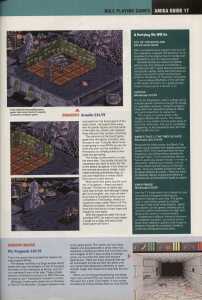 Dungeon Master ArticleCU Amiga Amiga Guide (United Kingdom), December 1992, Page 17[Credits: RetroPDFs]
Dungeon Master ArticleCU Amiga Amiga Guide (United Kingdom), December 1992, Page 17[Credits: RetroPDFs]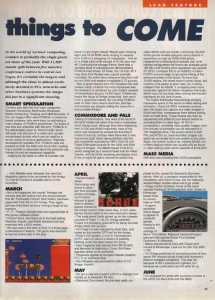 Dungeon Master NewsCU Amiga (United Kingdom), January 1993, Page 23[Credits: RetroPDFs]
Dungeon Master NewsCU Amiga (United Kingdom), January 1993, Page 23[Credits: RetroPDFs]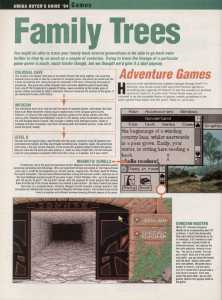 Dungeon Master ArticleCU Amiga (United Kingdom), Buyer's Guide '94 January 1994, Page 80[Credits: RetroPDFs]
Dungeon Master ArticleCU Amiga (United Kingdom), Buyer's Guide '94 January 1994, Page 80[Credits: RetroPDFs]- Datormagazin (Sweden)
 Mirrorsoft ArticleDatormagazin (Sweden), Vol 1989 No 6 April 1989, Page 4[Credits: Stone Oakvalley Studios]
Mirrorsoft ArticleDatormagazin (Sweden), Vol 1989 No 6 April 1989, Page 4[Credits: Stone Oakvalley Studios]- Famitsu (Japan)
 Dungeon Master (Super Famicom) ArticleFamitsu (Japan), Issue No 157 20 December 1991, Page 93[Credits: Gaming Alexandria]
Dungeon Master (Super Famicom) ArticleFamitsu (Japan), Issue No 157 20 December 1991, Page 93[Credits: Gaming Alexandria] Dungeon Master (Super Famicom) ArticleFamitsu (Japan), Issue No 157 20 December 1991, Page 100[Credits: Gaming Alexandria]
Dungeon Master (Super Famicom) ArticleFamitsu (Japan), Issue No 157 20 December 1991, Page 100[Credits: Gaming Alexandria]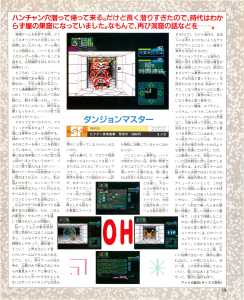 Dungeon Master (Super Famicom) ArticleFamitsu (Japan), Issue No 165 14 February 1992, Page 39[Credits: Internet Archive]
Dungeon Master (Super Famicom) ArticleFamitsu (Japan), Issue No 165 14 February 1992, Page 39[Credits: Internet Archive] Dungeon Master (Super Famicom) ArticleFamitsu (Japan), Issue No 168 06 March 1992, Page 43[Credits: Gaming Alexandria]
Dungeon Master (Super Famicom) ArticleFamitsu (Japan), Issue No 168 06 March 1992, Page 43[Credits: Gaming Alexandria]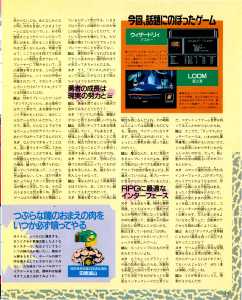 Dungeon Master (Super Famicom) ArticleFamitsu (Japan), Issue No 168 06 March 1992, Page 44[Credits: Gaming Alexandria]
Dungeon Master (Super Famicom) ArticleFamitsu (Japan), Issue No 168 06 March 1992, Page 44[Credits: Gaming Alexandria]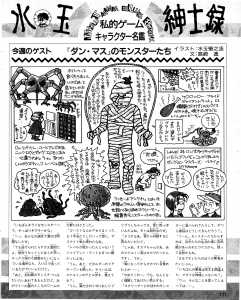 Dungeon Master ArticleFamitsu (Japan), Issue No 202 25 October 1992, Page 117[Credits: Gaming Alexandria]
Dungeon Master ArticleFamitsu (Japan), Issue No 202 25 October 1992, Page 117[Credits: Gaming Alexandria]- Game Pia (Japan)
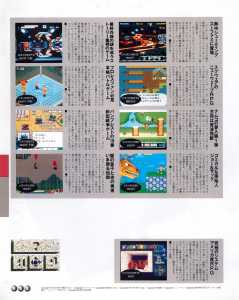 Dungeon Master (Super NES) NewsGame Pia (Japan), Vol 1 25 December 1991, Page 23[Credits: Gaming Alexandria]
Dungeon Master (Super NES) NewsGame Pia (Japan), Vol 1 25 December 1991, Page 23[Credits: Gaming Alexandria]- Games TM (United Kingdom)
 Dungeon Master ArticleGames TM (United Kingdom), Issue No 19 May 2004, Page 142
Dungeon Master ArticleGames TM (United Kingdom), Issue No 19 May 2004, Page 142 Dungeon Master (Amiga) ArticleGames TM (United Kingdom), Issue No 34 July 2005, Page 124
Dungeon Master (Amiga) ArticleGames TM (United Kingdom), Issue No 34 July 2005, Page 124 Dungeon Master (Amiga) ArticleGames TM (United Kingdom), Issue No 34 July 2005, Page 125
Dungeon Master (Amiga) ArticleGames TM (United Kingdom), Issue No 34 July 2005, Page 125 Dungeon Master ArticleGames TM (United Kingdom), Issue No 42 March 2006, Page 144
Dungeon Master ArticleGames TM (United Kingdom), Issue No 42 March 2006, Page 144- Games TM Retro (United Kingdom)
- Génération 4 (France)
 Dungeon Master And Chaos Strikes Back And Unnamed Science Fiction Game NewsGénération 4 (France), Issue No 5 September-October 1988, Page 108[Credits: Abandonware Magazines]
Dungeon Master And Chaos Strikes Back And Unnamed Science Fiction Game NewsGénération 4 (France), Issue No 5 September-October 1988, Page 108[Credits: Abandonware Magazines] Dungeon Master And Chaos Strikes Back And Unnamed Science Fiction Game NewsGénération 4 (France), Issue No 6 November 1988, Page 112[Credits: Abandonware Magazines]
Dungeon Master And Chaos Strikes Back And Unnamed Science Fiction Game NewsGénération 4 (France), Issue No 6 November 1988, Page 112[Credits: Abandonware Magazines] Dungeon Master And Unnamed Science Fiction Game NewsGénération 4 (France), Issue No 21 April 1990, Page 116[Credits: Abandonware Magazines]
Dungeon Master And Unnamed Science Fiction Game NewsGénération 4 (France), Issue No 21 April 1990, Page 116[Credits: Abandonware Magazines]- Login (Japan)
 Dungeon Master ArticleLogin (Japan), Vol 10 No 4 15 February 1991, Page 170[Credits: Gaming Alexandria]
Dungeon Master ArticleLogin (Japan), Vol 10 No 4 15 February 1991, Page 170[Credits: Gaming Alexandria] Dungeon Master ArticleLogin (Japan), Vol 10 No 4 15 February 1991, Page 171[Credits: Gaming Alexandria]
Dungeon Master ArticleLogin (Japan), Vol 10 No 4 15 February 1991, Page 171[Credits: Gaming Alexandria] Dungeon Master ArticleLogin (Japan), Vol 10 No 4 15 February 1991, Page 172[Credits: Gaming Alexandria]
Dungeon Master ArticleLogin (Japan), Vol 10 No 4 15 February 1991, Page 172[Credits: Gaming Alexandria]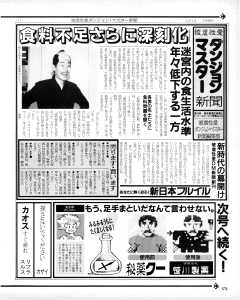 Dungeon Master ArticleLogin (Japan), Vol 10 No 4 15 February 1991, Page 173[Credits: Gaming Alexandria]
Dungeon Master ArticleLogin (Japan), Vol 10 No 4 15 February 1991, Page 173[Credits: Gaming Alexandria]- Megazone (Australia)
 Dungeon Master (PC) NewsMegazone (Australia), Issue No 23 August-September 1992, Page 12[Credits: Retro CDN]
Dungeon Master (PC) NewsMegazone (Australia), Issue No 23 August-September 1992, Page 12[Credits: Retro CDN]- Micom BASIC Magazine (Japan)
 Dungeon Master (FM-Towns, PC-9801, X68000) NewsMicom BASIC Magazine (Japan), January 1990, Page 264[Credits: Sega Retro]
Dungeon Master (FM-Towns, PC-9801, X68000) NewsMicom BASIC Magazine (Japan), January 1990, Page 264[Credits: Sega Retro] Dungeon Master NewsMicom BASIC Magazine (Japan), May 1990, Page 284[Credits: Sega Retro]
Dungeon Master NewsMicom BASIC Magazine (Japan), May 1990, Page 284[Credits: Sega Retro] Dungeon Master (Super Famicom) NewsMicom BASIC Magazine (Japan), January 1992, Page 244[Credits: Sega Retro]
Dungeon Master (Super Famicom) NewsMicom BASIC Magazine (Japan), January 1992, Page 244[Credits: Sega Retro]- Micromanía (Spain)
 Mirrorsoft InterviewMicromanía (Spain), Segunda época Issue No 12 May 1989, Page 18[Credits: Internet Archive]
Mirrorsoft InterviewMicromanía (Spain), Segunda época Issue No 12 May 1989, Page 18[Credits: Internet Archive]- New Computer Express (United Kingdom)
 Dungeon Master (Atari ST) Sales NumbersNew Computer Express (United Kingdom), Issue No 3 26 November 1988, Page 6[Credits: Internet Archive]
Dungeon Master (Atari ST) Sales NumbersNew Computer Express (United Kingdom), Issue No 3 26 November 1988, Page 6[Credits: Internet Archive] Dungeon Master (Amiga) ArticleNew Computer Express (United Kingdom), Issue No 7-8 24 December 1988, Page 4[Credits: Internet Archive]
Dungeon Master (Amiga) ArticleNew Computer Express (United Kingdom), Issue No 7-8 24 December 1988, Page 4[Credits: Internet Archive] Dungeon Master (Amiga) ArticleNew Computer Express (United Kingdom), Issue No 12 28 January 1989, Page 14[Credits: Internet Archive]
Dungeon Master (Amiga) ArticleNew Computer Express (United Kingdom), Issue No 12 28 January 1989, Page 14[Credits: Internet Archive] Dungeon Master MailNew Computer Express (United Kingdom), Issue No 67 17 February 1990, Page 66[Credits: Internet Archive]
Dungeon Master MailNew Computer Express (United Kingdom), Issue No 67 17 February 1990, Page 66[Credits: Internet Archive] Dungeon Master (DOS) NewsNew Computer Express (United Kingdom), Issue No 71 17 March 1990, Page 7[Credits: Internet Archive]
Dungeon Master (DOS) NewsNew Computer Express (United Kingdom), Issue No 71 17 March 1990, Page 7[Credits: Internet Archive]- Oh!FMTOWNS (Japan)
 Dungeon Master (FM-Towns) InterviewOh!FMTOWNS (Japan), Vol 10 No 8 Issue No 108 October 1992, Page 118[Credits: Internet Archive]
Dungeon Master (FM-Towns) InterviewOh!FMTOWNS (Japan), Vol 10 No 8 Issue No 108 October 1992, Page 118[Credits: Internet Archive] Dungeon Master (FM-Towns) InterviewOh!FMTOWNS (Japan), Vol 10 No 8 Issue No 108 October 1992, Page 119[Credits: Internet Archive]
Dungeon Master (FM-Towns) InterviewOh!FMTOWNS (Japan), Vol 10 No 8 Issue No 108 October 1992, Page 119[Credits: Internet Archive] Dungeon Master (FM-Towns) InterviewOh!FMTOWNS (Japan), Vol 10 No 8 Issue No 108 October 1992, Page 120[Credits: Internet Archive]
Dungeon Master (FM-Towns) InterviewOh!FMTOWNS (Japan), Vol 10 No 8 Issue No 108 October 1992, Page 120[Credits: Internet Archive] Dungeon Master (FM-Towns) InterviewOh!FMTOWNS (Japan), Vol 10 No 8 Issue No 108 October 1992, Page 121[Credits: Internet Archive]
Dungeon Master (FM-Towns) InterviewOh!FMTOWNS (Japan), Vol 10 No 8 Issue No 108 October 1992, Page 121[Credits: Internet Archive]- Page 6 (United Kingdom)
 Dungeon Master NewsPage 6 (United Kingdom), Issue No 56 June-July 1992, Page 66[Credits: RetroPDFs]
Dungeon Master NewsPage 6 (United Kingdom), Issue No 56 June-July 1992, Page 66[Credits: RetroPDFs]- Power Play (Germany)
 Dungeon Master (Atari ST, Apple IIGS, Amiga) NewsPower Play (Germany), March 1988, Page 15[Credits: Kultpower]
Dungeon Master (Atari ST, Apple IIGS, Amiga) NewsPower Play (Germany), March 1988, Page 15[Credits: Kultpower]- SNES Force (United Kingdom)
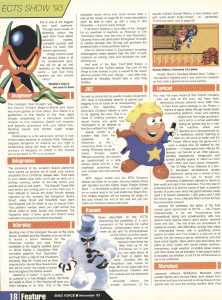 Dungeon Master (Super NES) NewsSNES Force (United Kingdom), Issue No 6 November 1993, Page 18[Credits: RetroPDFs]
Dungeon Master (Super NES) NewsSNES Force (United Kingdom), Issue No 6 November 1993, Page 18[Credits: RetroPDFs]- ST Action (United Kingdom)
 Mirrorsoft ArticleST Action (United Kingdom), Issue No 6 October 1988, Page 22[Credits: RAF68]
Mirrorsoft ArticleST Action (United Kingdom), Issue No 6 October 1988, Page 22[Credits: RAF68] Mirrorsoft ArticleST Action (United Kingdom), Issue No 6 October 1988, Page 23[Credits: RAF68]
Mirrorsoft ArticleST Action (United Kingdom), Issue No 6 October 1988, Page 23[Credits: RAF68] Mirrorsoft ArticleST Action (United Kingdom), Issue No 6 October 1988, Page 24[Credits: RAF68]
Mirrorsoft ArticleST Action (United Kingdom), Issue No 6 October 1988, Page 24[Credits: RAF68] Mirrorsoft ArticleST Action (United Kingdom), Issue No 6 October 1988, Page 26[Credits: RAF68]
Mirrorsoft ArticleST Action (United Kingdom), Issue No 6 October 1988, Page 26[Credits: RAF68]- ST Amiga Format (United Kingdom)
 Dungeon Master ArticleST Amiga Format (United Kingdom), Issue No 9 March 1989, Page 7[Credits: RetroPDFs]
Dungeon Master ArticleST Amiga Format (United Kingdom), Issue No 9 March 1989, Page 7[Credits: RetroPDFs] Dungeon Master ArticleST Amiga Format (United Kingdom), Issue No 9 March 1989, Page 8[Credits: RetroPDFs]
Dungeon Master ArticleST Amiga Format (United Kingdom), Issue No 9 March 1989, Page 8[Credits: RetroPDFs] Dungeon Master Sales NumbersST Amiga Format (United Kingdom), Issue No 13 July 1989, Page 71[Credits: RetroPDFs]
Dungeon Master Sales NumbersST Amiga Format (United Kingdom), Issue No 13 July 1989, Page 71[Credits: RetroPDFs]- ST Format (United Kingdom)
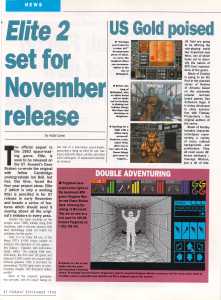 Dungeon Master NewsST Format (United Kingdom), Issue No 38 September 1992, Page 26[Credits: RetroPDFs]
Dungeon Master NewsST Format (United Kingdom), Issue No 38 September 1992, Page 26[Credits: RetroPDFs]- ST X-PRESS (USA)
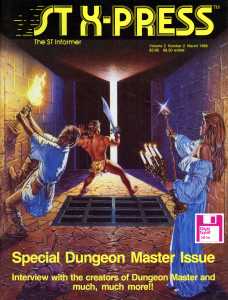 Dungeon Master (Atari ST) CoverST X-PRESS (USA), Vol 2 No 2 March 1988[Credits: Matt Hill]
Dungeon Master (Atari ST) CoverST X-PRESS (USA), Vol 2 No 2 March 1988[Credits: Matt Hill]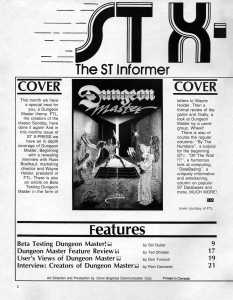 Dungeon Master (Atari ST) ContentsST X-PRESS (USA), Vol 2 No 2 March 1988, Page 2[Credits: Matt Hill]
Dungeon Master (Atari ST) ContentsST X-PRESS (USA), Vol 2 No 2 March 1988, Page 2[Credits: Matt Hill]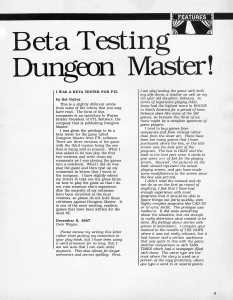 Dungeon Master (Atari ST) ArticleST X-PRESS (USA), Vol 2 No 2 March 1988, Page 9[Credits: Matt Hill]
Dungeon Master (Atari ST) ArticleST X-PRESS (USA), Vol 2 No 2 March 1988, Page 9[Credits: Matt Hill] Dungeon Master (Atari ST) ArticleST X-PRESS (USA), Vol 2 No 2 March 1988, Page 10[Credits: Matt Hill]
Dungeon Master (Atari ST) ArticleST X-PRESS (USA), Vol 2 No 2 March 1988, Page 10[Credits: Matt Hill]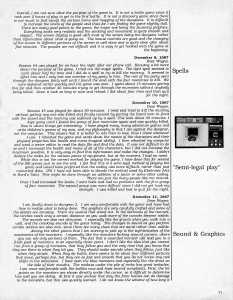 Dungeon Master (Atari ST) ArticleST X-PRESS (USA), Vol 2 No 2 March 1988, Page 11[Credits: Matt Hill]
Dungeon Master (Atari ST) ArticleST X-PRESS (USA), Vol 2 No 2 March 1988, Page 11[Credits: Matt Hill]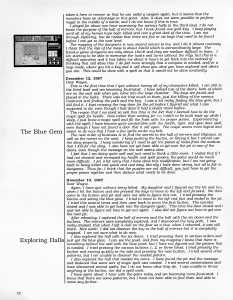 Dungeon Master (Atari ST) ArticleST X-PRESS (USA), Vol 2 No 2 March 1988, Page 12[Credits: Matt Hill]
Dungeon Master (Atari ST) ArticleST X-PRESS (USA), Vol 2 No 2 March 1988, Page 12[Credits: Matt Hill]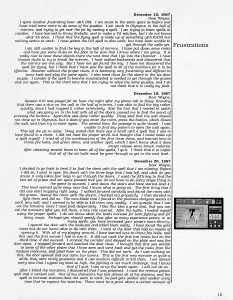 Dungeon Master (Atari ST) ArticleST X-PRESS (USA), Vol 2 No 2 March 1988, Page 13[Credits: Matt Hill]
Dungeon Master (Atari ST) ArticleST X-PRESS (USA), Vol 2 No 2 March 1988, Page 13[Credits: Matt Hill] Dungeon Master (Atari ST) ArticleST X-PRESS (USA), Vol 2 No 2 March 1988, Page 14[Credits: Matt Hill]
Dungeon Master (Atari ST) ArticleST X-PRESS (USA), Vol 2 No 2 March 1988, Page 14[Credits: Matt Hill]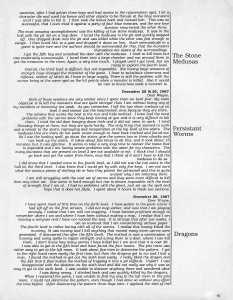 Dungeon Master (Atari ST) ArticleST X-PRESS (USA), Vol 2 No 2 March 1988, Page 15[Credits: Matt Hill]
Dungeon Master (Atari ST) ArticleST X-PRESS (USA), Vol 2 No 2 March 1988, Page 15[Credits: Matt Hill]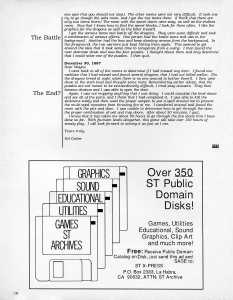 Dungeon Master (Atari ST) ArticleST X-PRESS (USA), Vol 2 No 2 March 1988, Page 16[Credits: Matt Hill]
Dungeon Master (Atari ST) ArticleST X-PRESS (USA), Vol 2 No 2 March 1988, Page 16[Credits: Matt Hill]- Super Play (United Kingdom)
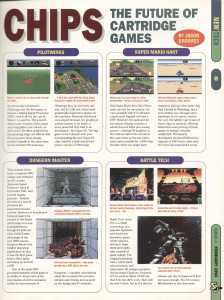 Dungeon Master (Super NES) ArticleSuper Play (United Kingdom), Issue No 4 February 1993, Page 49[Credits: RetroPDFs]
Dungeon Master (Super NES) ArticleSuper Play (United Kingdom), Issue No 4 February 1993, Page 49[Credits: RetroPDFs] Dungeon Master (Super NES) NewsSuper Play (United Kingdom), Issue No 9 July 1993, Page 18[Credits: RetroPDFs]
Dungeon Master (Super NES) NewsSuper Play (United Kingdom), Issue No 9 July 1993, Page 18[Credits: RetroPDFs]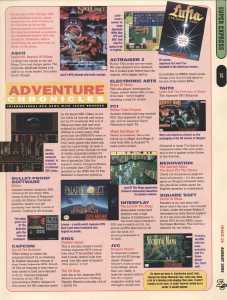 Dungeon Master (Super NES) NewsSuper Play (United Kingdom), Issue No 10 August 1993, Page 15[Credits: RetroPDFs]
Dungeon Master (Super NES) NewsSuper Play (United Kingdom), Issue No 10 August 1993, Page 15[Credits: RetroPDFs]- Technopolis (Japan)
 Dungeon Master (PC-9801, X68000) Release DateTechnopolis (Japan), Vol 9 No 1 Issue No 89 01 January 1990, Page 50[Credits: Internet Archive]
Dungeon Master (PC-9801, X68000) Release DateTechnopolis (Japan), Vol 9 No 1 Issue No 89 01 January 1990, Page 50[Credits: Internet Archive] Dungeon Master (PC-9801, X68000) Release DateTechnopolis (Japan), Vol 9 No 2 Issue No 90 15 February 1990, Page 50
Dungeon Master (PC-9801, X68000) Release DateTechnopolis (Japan), Vol 9 No 2 Issue No 90 15 February 1990, Page 50 Dungeon Master (PC-9801, X68000) Release DateTechnopolis (Japan), Vol 9 No 3 Issue No 91 15 March 1990, Page 42
Dungeon Master (PC-9801, X68000) Release DateTechnopolis (Japan), Vol 9 No 3 Issue No 91 15 March 1990, Page 42- Tilt (France)
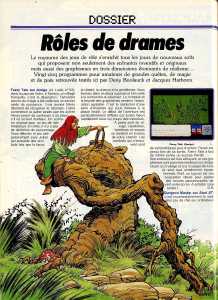 Dungeon Master (Atari ST) ArticleTilt (France), Issue No 53 April 1988, Page 78[Credits: Abandonware Magazines]
Dungeon Master (Atari ST) ArticleTilt (France), Issue No 53 April 1988, Page 78[Credits: Abandonware Magazines]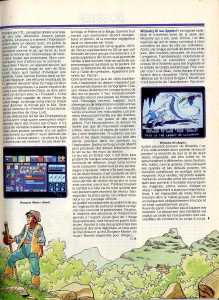 Dungeon Master (Atari ST) ArticleTilt (France), Issue No 53 April 1988, Page 79[Credits: Abandonware Magazines]
Dungeon Master (Atari ST) ArticleTilt (France), Issue No 53 April 1988, Page 79[Credits: Abandonware Magazines]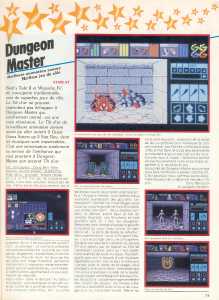 Dungeon Master (Atari ST) ArticleTilt (France), Issue No 60 December 1988, Page 11[Credits: Abandonware Magazines]
Dungeon Master (Atari ST) ArticleTilt (France), Issue No 60 December 1988, Page 11[Credits: Abandonware Magazines] Dungeon Master Sales NumbersTilt (France), Issue No 61 December 1988, Page 112[Credits: Abandonware Magazines]
Dungeon Master Sales NumbersTilt (France), Issue No 61 December 1988, Page 112[Credits: Abandonware Magazines]- Unknown Magazine (Germany)
Books
- The CRPG Book (v4.0, October 2023)
- You may freely download the book as PDF or buy a hard copy.
- Le petit livre des jeux vidéo (2015, Publisher: Marabout)
Cover painting
The original cover painting for the Dungeon Master box was made by artist David Darrow.
It illustrates a scene described in the prologue found in the game’s manual (written by Nancy Holder). It represents the doors opening to Lord Chaos (not represented) while Halk prepares for fight, Alex trying to pull a torch out of a sconce and Syra holding a candelabra and her staff in the direction of the door.
Note that for some unknown reason, the word ‘master’ is missing (it was not painted on the original).

[Credits: Ingmar]
This very nice article about How the cover art of Dungeon Master was made contains an interview of David Darrow and some photos he used to prepare his work.
Below are comments made by the author himself:
From the article titled ‘Mastering Chaos’, printed in issue #10 of ‘Retro Gamer’ and written by Richard Hewison (full article available on Interviews and articles)
Following his work on Sundog, David Darrow was asked to create the cover artwork for DM, and he decided to use local people as models. “In the foreground is my now ex-wife, who had to hold a very heavy candelabra for the photos I shot for reference,” revealed David. “The guy grabbing the torch was programmer Andy Jaros, and the muscle-dude in the background was some guy I found at a gym. I walked into a fitness centre and asked the receptionist if there was a really huge guy there who she thought might like to pose for pictures for a ‘hero video game cover’ and she went and got him. I paid him to come to my home and pose for the pictures with a fluorescent bulb in his hands as a sword.
“The woman’s costume was really a modified night gown, the muscle man’s stuff was invented, and Andy Jaros brought his own costume. Yeah, he owned all that stuff!
“I painted the cover about four of five times the size of the retail box on a gessoed masonite panel. I used airbrushed liquitex acrylic and coloured pencils to render it. It took about three weeks, because the technique was all new to me, and I felt under tremendous pressure. That was my own doing. FTL was very patient with me.”
David took his inspiration from artist Drew Struzan who has painted a large number of famous film posters over the last 25 years, including Raiders of the Lost Ark, Blade Runner, Back to the Future I, II and III and more recently Star Wars Episode I and Hellboy, to name but a few.
From an email sent to Cowsmaunaut:
“To be honest, I was a huge fan of Drew Struzan at the time, and surrounded myself with posters of his. You are right: airbrush, painting, and Prismacolor (no ink). Art School taught me what I was capable of, but really, I learned just like you: by analyzing the work of more experienced, better artists. I used photos of various people I knew for the models. Hired the muscle man from a local gym. The woman with the (very heavy) candelabra was my first wife. And the guy pulling on the torch was Andy, the art-man for the game. The rest is entirely invented. I worked on a piece of masonite, about 25 - 30 inches tall, gessoed with a very heavy brush strokes to give it inherent texture (I still use this from time to time on my Fine Art paintings). Really, not much was cropped out, since it was designed to fit specific proportions. The bleed was pre-determined, and planned for.”
Variants
Versions comparison
Here are some differences between the versions of the game:
Sounds: The PC, Atari ST and X68000 versions have mono sounds. The Amiga, Apple IIGS and SNES versions have stereo sounds.
In Dungeon Master for Atari ST and for X68000, there is no sound when creatures move in the dungeon and when you use War Cry or Blow Horn.Perspective: There are two variants of the dungeon view:
Animated comparison:

In earlier versions of the game (Atari ST, Amiga v2.0, …), you cannot drink straight from the water fountains, you have to use a Flask or a Waterskin. In the Amiga v3.6 version, you just have to click on the fountain to drink. Also in these versions, you cannot click on walls. In the Amiga v3.6 version, real walls will produce some sound while fake walls will be silent.
Kid Dungeon: The Kid Dungeon is only present in the Apple IIGS versions and in the Amiga 2.2 English version
PC: The PC version is the only one that has music on the first screen (with the Enter / Resume buttons), and an endgame animation that replaces the four texts displayed in other versions.
Atari ST: The Atari ST versions 1.0a and 1.0b are the only ones where Lock Picks can be found in the Dungeon: Alex Ander has one, and another is at (06,10,06). In v1.1 Alex Ander’s Lock Picks were replaced with a sling and the Lock Picks found in the dungeon removed.
Version 1.2 adds faster regeneration of Mana, Stamina and Health (particularly when sleeping) and faster convergence of current statistic values back to their maximum values if they are temporarily above their maximum value.X68000: The X68000 version has a larger screen view than other platforms (larger entrance screen and in-game borders).
PC-9801: The color palette is more limited than in other versions: creature graphics use less colors making some of them look strange, and there are only 3 light levels.
SNES: The SNES version is the only one that has an introduction sequence. It also has music during the game. Most of the original graphics had to be redrawn because of the smaller screen resolution of the Super Famicom / Super NES (256x224 pixels) compared to the computers where the game was designed (320x200 pixels). This was done by Japanese artists and explains the change in style (You may compare side-by-side graphics of Dungeon Master Creatures, Dungeon Master Champions or Dungeon Master Items).
There are many smaller differences in the dungeon that you can see on Dungeon Master CSBuild maps for PC and Super NES / Super FamicomFM-Towns: The FM-Towns version has CD Audio music during the game. That music was also released as a stand alone Dungeon Master The Album.
Box variants
In US and Europe, there were several Dungeon Master box variants:
- Early FTL US box: the very first box printed. It is easily recognized as it is the only one with a golden FTL logo on the front (the logo is white on all other boxes). The box is thicker than the later box and the front cover is actually a sleeve: you can open it like a book and insert a sheet of paper inside. It was only used for Dungeon Master for Atari ST (USA Early Box).
- Later FTL US box: The FTL logo on the front is now white. The box is slimmer and the cover is not a paper sleeve anymore. Note there was a special version for PC that was bundled with the FTL sound adapter in a small additional box, see Dungeon Master for PC (USA with FTL sound Adapter).
- Mirrorsoft first edition EU box: The same box as the later US box with English text on the back. In UK, a sticker with the MirrorSoft logo (the European distributor) was added on the front. In France and Germany, an additional and separate back sheet translated to French or German with the Mirrorsoft logo on the bottom was supplied as a replacement.
- Mirrorsoft second edition EU box: A box similar to the later US box. French and German versions have additional text at the bottom of the box on the front (‘Version Française’ and ‘Mit deutscher Bedienungsanleitung’ respectively). The text is translated to French or German and the Mirrorsoft logo is directly printed on the back of the box and not anymore on a separate sheet of paper.
- Psygnosis EU box: After Mirrorsoft shut down in 1992, Psygnosis became the European distributor of Dungeon Master and Chaos Strikes Back. A single new box was designed for all versions of the game, featuring multi-language text on the back (English, French, German). These releases also have manuals with new covers.
- There are many small variations with different stickers added to indicate the platform, or a bundle with Chaos Strikes Back, a promotion, etc. The original bar code printed directly on the box is also often replaced with a sticker for the appropriate market.
Manual variants
- “(Doc. 106)” is written or not on bottom of the back cover
- Italics are used or not on the title/credits page
- Two different postal addresses were used on copyrights page, containing either “Post Office Box 112489, San Diego, California 92111” or “P.O. Box 710490, San Diego, California 92171”
Dungeon differences between Atari ST and PC versions
Here are some differences in the dungeon between the Atari ST and the PC versions.
In the Atari ST version:
- At (00,16,08), the champion Alex Ander has Lock Picks. In the PC version, he has a Sling instead.
- At (00,17,09), the champion Nabi The Prophet has no item. In the PC version, he has: Staff, Tunic, Blue Pants, Sandals.
- At (01,29,25) and (01,04,30), there is nothing. In the PC version, two rocks were added.
- At (05,11,23) and (05,11,27), there is nothing. In the PC version, two groups of skeletons were added, behind walls that are opened when you walk on both sides of the door at (05,10,20). Two other groups of skeletons were added in the room.
- At (05,26,10), the dungeon mechanism used for the teleporters on both sides of the door is very different between the two versions, although it is invisible to the player.
- At (06,10,06), there are Lock Picks that were removed in the PC version.
- At (11,43,31), the moveable wall was replaced by a door in the PC version.
Kid Dungeon (Bonus dungeon)
Some versions of Dungeon Master contain an additional bonus dungeon named the “Kid Dungeon”. It consists of three small and simple levels containing some creatures and lots of items. There are two variants with slight differences:
- The first variant is found in Dungeon Master for Apple IIGS versions 2.0 and 2.1 English (in a file named DUNGEON.BONUS). You can enter the Kid Dungeon by pressing the Apple IIGS Option key (F2 or right Alt key in emulators) while clicking the Enter button on the entrance screen.
- The second variant is found in Dungeon Master for Amiga version 2.2 English (in a file named DungeonB.dat). You can enter the Kid Dungeon by pressing the Alt key while the game is loading (between the FTL logo screen and the entrance screen). Then click the Enter button on the entrance screen.
The Apple IIGS versions contain instructions to enter the Kid Dungeon:
Note that the instructions for Amiga are erroneous (you don’t need to press Alt while clicking Enter but while the game is loading), and that instructions are provided for Atari ST but the Kid Dungeon is not available in these versions. No instructions were provided with the Amiga version.You can download the Kid dungeon files to play on other platforms or clones. Someone also made a custom Atari ST disk image available here and here.
No other version of Dungeon Master or Chaos Strikes Back allows entering a bonus dungeon:
- Dungeon Master for Amiga version 2.1 English contains the necessary code to load a bonus dungeon but the DungeonB.dat file is missing on the floppy disk. If you copy it on the floppy disk then you can enter the Kid Dungeon just like in version 2.2 English.
- Dungeon Master for Amiga version 2.2 German does not contain the necessary code to load a bonus dungeon but the DungeonB.dat file is present (the same as in Dungeon Master for Amiga version 2.2 English).
- The following versions do not contain the Kid Dungeon file nor the necessary code to load a bonus dungeon:
- Dungeon Master and Chaos Strikes Back for Atari ST
- Dungeon Master demo for Apple IIGS version 1.4 English
- Dungeon Master for Amiga version 2.0 English, French and German
- Dungeon Master demo for Amiga version 2.0 English
- The following versions do not contain the Kid Dungeon file. They contain the necessary code to load a bonus dungeon but there is no way to trigger it, making it impossible to load a bonus dungeon even if you would copy the missing file:
- Dungeon Master for PC
- Dungeon Master for Amiga version 3.6
- Chaos Strikes Back for Amiga
- Dungeon Master and Chaos Strikes Back for X68000
- Dungeon Master and Chaos Strikes Back for FM-Towns
- Dungeon Master and Chaos Strikes Back for PC-9801
Traces of early designs
On pages 6 and 9 of the game Manual there are pictures of some wand or staff which is not in the final game. It may be an early design for another item:
Several items were designed but not fully implemented (like several potions) or used in the dungeon (like Lock Picks, The Conduit, Hexhelm, PowerTowers, …). See the Dungeon Master Items page and look for items that are “Only available by hacking” (this page lists items for the PC version of Dungeon Master only). Note that some of these items were used only in specific versions of the game or later in CSB.
If you look at the screenshots on the back cover of the box on the scans from the Dungeon Master for PC (USA with FTL sound Adapter) page, you can notice several things that are different in the final version:
- The location on the screenshot does not exist in the final dungeon.
- The text message “Syra’s spell fizzles and dies” was changed in the final version.
- Alex has no left hand. You can produce this no hand effect by loading up a hand with one of the ‘hidden’ potions that weren’t finally implemented in the game through an editor like DMute. [Credits: Beowuuf]
- On the inventory panel MANNA is written instead of MANA.
- The door ornament looks slightly different in the final version. It is used in the Dungeon Master dungeon at (05,16,13), (05,18,13), (06,07,04), (06,11,04), (06,15,04), (06,19,04) and (11,19,22)
- There is an open scroll in the champion’s pouch. In the final version the open scroll icon is only visible in the hand while reading the scroll.
- The spell symbols
 Dain and
Dain and
 Neta symbols are swapped in the final version.
Neta symbols are swapped in the final version.
The Firestaff: In the graphics.dat file, three objects called “The Firestaff” are defined. The third variation is not used in the game and the corresponding graphic is blank.
Staff Of Claws: In the graphics.dat file, three objects called “Staff Of Claws” are defined. The third variation is not used in the game but it has a corresponding graphic with a different color than the other variations.
Dragon Spit: Each weapon has an associated attack list, consisting of one to three attacks. This is defined in the properties of each weapon. Strangely, there is an attack list (#34) that is not used by any weapon in the game. It consists of the following attacks: “Swing”, “Parry”, and “Spit”. The Spit attack is programmed to launch a powerful fireball. Here is an extract of an ascii dump made with CSBwin (Byte3 was added by rain` and is the attack list number associated to the item):
Object Index 61 = Weapon Type 38 Byte3 31 Object Type = 62 = STAFF OF IRRAObject Index 62 = Weapon Type 39 Byte3 32 Object Type = 63 = CROSS OF NETAObject Index 63 = Weapon Type 40 Byte3 33 Object Type = 64 = SERPENT STAFFObject Index 64 = Weapon Type 41 Byte3 5 Object Type = 65 = DRAGON SPITObject Index 65 = Weapon Type 42 Byte3 35 Object Type = 66 = SCEPTRE OF LYFObject Index 66 = Weapon Type 43 Byte3 36 Object Type = 135 = HORN OF FEAR
It seems very likely that attack list #34 was designed for the Dragon Spit but was not used in the released versions, probably because such a powerful weapon would have compromised the balance of the game. [Credits: rain`]Dungeon Master for Amiga version 3.6: On the language selection screen, remove the floppy disk from the drive before choosing a language. The game will ask you to insert the Chaos Strikes Back floppy disk!
This is because the 3.6 version is based on previous version of Chaos Strikes Back for Amiga, and they forgot to update the picture for the error message.
There are some other mistakes in the graphics.dat file. When put on the floor, the Bow from Linflas’ inventory or also located at (03,10,09) looks like the Claw Bow from Chaos Strikes Back instead of the correct graphics from Dungeon Master.
If you extract all data from the graphics.dat file, you will find that the images used by the automap from Chaos Strikes Back are still present. [Credits: Johnny Grasset]
Sounds
The sounds were extracted from the Graphics.dat file and converted to MP3 format. You can listen to the creature attack and movement sounds on Dungeon Master Creatures.
Dungeon Master and Chaos Strikes Back (Amiga) - Swoosh
Dungeon Master and Chaos Strikes Back (Amiga) - Blowing Horn Of Fear
Dungeon Master and Chaos Strikes Back (Amiga) - Swallowing
Dungeon Master and Chaos Strikes Back (Amiga) - Champion Wounded 1
Dungeon Master and Chaos Strikes Back (Amiga) - Champion Wounded 2
Dungeon Master and Chaos Strikes Back (Amiga) - Champion Wounded 3
Dungeon Master and Chaos Strikes Back (Amiga) - Champion Wounded 4
Dungeon Master and Chaos Strikes Back (Amiga) - War Cry
Dungeon Master and Chaos Strikes Back (Amiga) - Running Into A Wall
Dungeon Master and Chaos Strikes Back (Amiga) - Teleporting
Dungeon Master and Chaos Strikes Back (Amiga) - Exploding Fireball
Dungeon Master and Chaos Strikes Back (Amiga) - Door
Dungeon Master and Chaos Strikes Back (Amiga) - Exploding Spell
Dungeon Master and Chaos Strikes Back (Amiga) - Switch
Dungeon Master and Chaos Strikes Back (Amiga) - Falling And Dying
Dungeon Master and Chaos Strikes Back (Amiga) - Falling Item
Dungeon Master and Chaos Strikes Back (Amiga) - Attack (Trolin - Stone Golem)-Touching Wall
Unreleased versions
CDTV
Here is an excerpt of ‘The Definitive CDTV Retrospective: Part II’ by Peter Olafson:
Dungeon Master (FTL): FTL president Wayne Holder reports the developer largely completed the CDTV conversion of this seminal dungeon crawl, only to be stymied by the inability to obtain reliable info from CBM on saving games to memory cards.
This was to be a moderately enhanced version with improved music and animation and a special animation player. It was never formally canceled; it just never surfaced. Some of the technology has surfaced in subsequent Amiga products (like Chaos Strikes Back), and for some time afterward, FTL continued to hold out hope it could complete the port.
“But things never came together at Commodore,” Holder indicated. “So, I suppose, it ended with a whimper rather than a bang.”
Macintosh
Dungeon Master was ported to Macintosh but never released.
